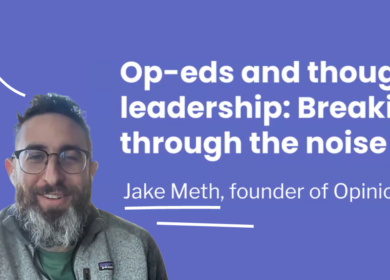
By Alex Diaz, Hoffman San Jose
Can every company be a media company?
Every Media Company, a content and editorial communications consultancy, hosted a panel of former journalists who have now shifted into editorial communications positions in San Francisco to answer this very question.
The media landscape has changed significantly from what it was during the dot-com days, which has caused a chain reaction for businesses and public relations agencies alike. There simply aren’t enough resources available to create the marketing content and the media buzz that most companies want, or need, to be successful. And public relations agencies have been forced to rethink the way they work with their partners and clients to help them find the best way to generate and proliferate their content.
After listening to hours of intense discussion on the importance of producing high-quality content, tricks to help generate that content and the meaning behind content marketing — I think that any business can be a media company. But there are some key strategies behind getting it right, which is where PR agencies come into the equation.
Today’s journalists aren’t as open to take a meeting with a company just to get to know them or learn about the CEO’s vision for their industry. There are simply too many companies, too few journalists, and not enough time in the day. When a conversation doesn’t include any exciting news or unique stories, journalists often pass. So how can a company create a media buzz without journalists writing it for them? By becoming a source for the media.

This is made possible through industry commentary, contributed articles and strategic social media content. Quentin Hardy, head of Editorial at Google Cloud and former writer for The New York Times, said a media company’s survival depends on “how trusted, how effective, how delightful of a relationship can you have with your readers.” A PR agency should cultivate the same relationship between its clients and journalists, making those companies and their executives trusted and reliable sources of interesting information.

But sometimes journalists don’t have the time or bandwidth to build that relationship. A way to get around this is to alert them about informative thought leadership on the company’s blog. Sam Diaz, director of Content Creation at Blanc & Otus, formerly with ZDNet, the Washington Post and the San Jose Mercury News, offered some advice. “If you allow the company and the executives to be thought leaders and publish stuff that’s not self-serving, it’s insightful. [It] gives a little bit of insight about the trend based on what they’ve seen in their background.” This allows the journalist to refer to the company as a resource of information when they need it.
There are many layers of storytelling, but it is so much more than just writing content. Part of the job of the PR professional is to take that story and craft it into something the media wants to care about. Diaz made an excellent point as to how we shape content to fit the needs of our audience, stating, “Let’s not focus so much on what your message is, but rather what the objective is — the longer term objective of either raising awareness around a product, or a brand, or maybe even elevating the exposure of an executive as a thought leader, or as an expert in that industry so that they’re the ones that the reporters and the mainstream media call when they’re working on a story.”

Peggy Northrop, CEO of Northrop Consulting, formerly EIC of More and Sunset, followed this up with a point about how powerful good content can be on its own. “If you have a community around your brand and a conversation that is ongoing, then you’re not doing campaigns,” she said, noting that in this situation you’re simply sharing content with the community. The company’s initiative should be to intrigue its audience by generating thought-provoking content, while also sprinkling in the executives’ messaging to increase brand, product and services awareness.
During the panel discussion, I listened to many other PR professionals in the room discuss the importance of trust and the true meaning of content marketing. But at the end of the day it doesn’t really matter what we call it. The process of developing content, the strategy behind it and the decision of where to place it — all of that is marketing the content. So when we consider if every company can be a media company, the answer is yes. Companies can take control of their content and design and leverage them in a way that appeals to the media. And PR agencies can be a key factor in that process, especially for businesses still stuck in their old ways of focusing too much on their internal brand — and not what their market, media and customers will actually engage with.

